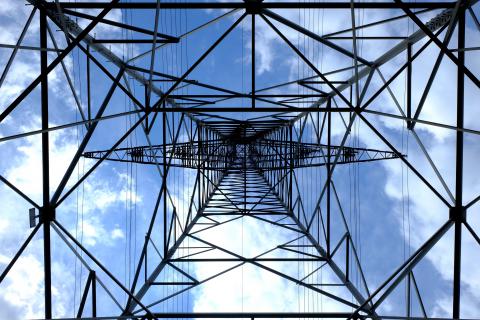 Auto Claims Trends: Frequency, Severity, Repair Costs, and Turnaround Times
Auto Claims Trends: Frequency, Severity, Repair Costs, and Turnaround TimesFacing weather conditions that could spark a wildfire, PG&E announced its plans to shut down power in some parts of California’s Bay Area. According to SFGate, 734,000 homes and businesses were impacted. Speaking at a press conference, PG&E CEO Bill Johnson said, “This is not how we want to serve you, but blackouts can happen again.”
This is true. Whether planned as a precautionary measure or the result of an unforeseen accident, blackouts are a relatively common occurrence. Some last for a short time. Others go on for days. All of them have the potential to impact your business. Whether or not you were impacted by PG&E’s power shutdown this time, it’s important to prepare for the next blackout.
The History Behind PG&E’s Decision
PG&E has ample reason to worry about wildfires. In 2018, the Camp Fire devastated the town of Paradise and killed 86 people. The California Department of Forestry and Fire Protection (CAL Fire) determined that PG&E electrical transmission lines were a cause of the fire. In a statement, PG&E accepted this determination.
According to the Los Angeles Times, PG&E has admitted that its equipment likely caused 10 Northern and Central California wildfires in 2019.
Rather than risk another major wildfire like the Camp Fire, PG&E made the decision to shut down power in advance of dangerous weather conditions. “The safety of our customers and the communities we serve is our most important responsibility, which is why PG&E has decided to turn power off to customers during this widespread, severe wind event. We understand the effects this event will have on our customers and appreciate the public’s patience as we do what is necessary to keep our communities safe and reduce the risk of wildfire,” said Michael Lewis, PG&E’s senior vice president of Electric Operations.
Preparing for a Blackout
A long blackout will always be disruptive for your business, but with the right precautions, you can limit the impact.
- Make sure you get alerts. PG&E tried to send alerts to customers, but they cannot do so if the contact information they have is out of date. You should also make sure you’re getting weather and emergency updates for your area.
- Know how you’ll communicate. If a blackout occurs, you’ll need to let customers and workers know by updating your website, using email autoresponders, changing voicemail and other measures. Figure out how you’ll do this without power. Be sure to have remote access to needed passwords and systems.
- Consider alternate sources of power. These can include generators and batteries.
- If your company needs power for safety reasons, build redundancy into your backup plans and consider worst-case scenarios. In 2017, Hurricane Harvey resulted in major flooding in Texas, along with power outages. According to the Weather Channel, the loss of power caused chemicals at the Arkema chemical plant to heat and decompose, leading to fires and explosions. Two senior staff members were indicted for failing to prevent the explosions. Act preemptively to avoid this type of scenario.
- Build an emergency kit. If the power goes out during business hours, you need to keep everyone safe. Have emergency supplies, including flashlights and first aid kits, available.
- Determine a staffing plan. Decide which employees need to stay at work and which employees can be sent home in blackout scenarios. Ask telecommuters who live outside the blackout area to continue core services if possible. If your company has offices in other areas of the state or country, enlist their support to answer your phones and minimize service disruptions.
- Disconnect appliances and electronics when the power is out. Otherwise, electrical surges can cause damage.
- Don’t serve food that may have spoiled during an outage. The waste is unfortunate, but it’s better to be safe.
Last but not least, check to see if your business insurance package includes business interruption coverage. Contact your Heffernan Insurance Brokers’ agent to learn more.



